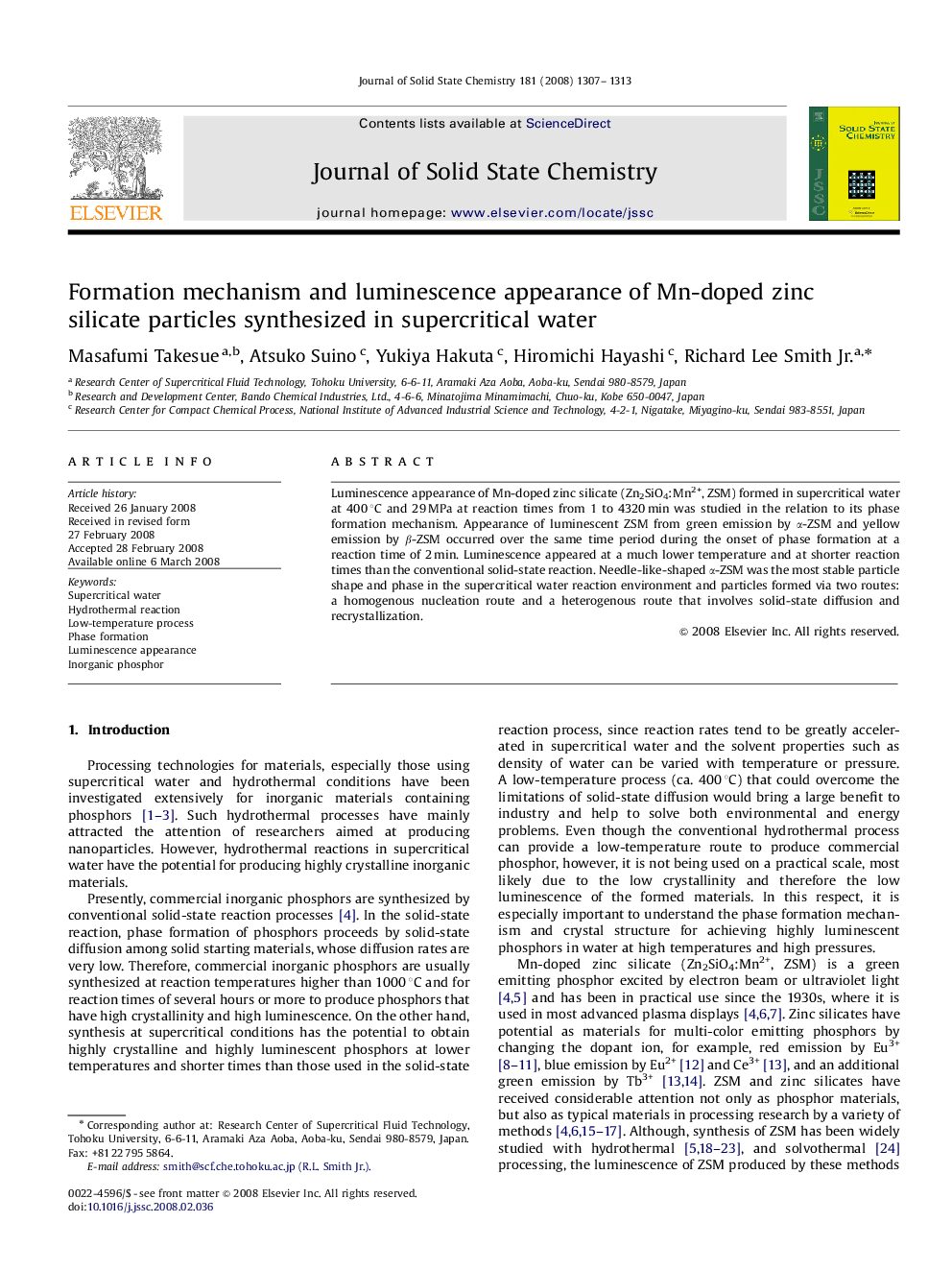| Article ID | Journal | Published Year | Pages | File Type |
|---|---|---|---|---|
| 1332815 | Journal of Solid State Chemistry | 2008 | 7 Pages |
Luminescence appearance of Mn-doped zinc silicate (Zn2SiO4:Mn2+, ZSM) formed in supercritical water at 400 °C and 29 MPa at reaction times from 1 to 4320 min was studied in the relation to its phase formation mechanism. Appearance of luminescent ZSM from green emission by α-ZSM and yellow emission by β-ZSM occurred over the same time period during the onset of phase formation at a reaction time of 2 min. Luminescence appeared at a much lower temperature and at shorter reaction times than the conventional solid-state reaction. Needle-like-shaped α-ZSM was the most stable particle shape and phase in the supercritical water reaction environment and particles formed via two routes: a homogenous nucleation route and a heterogenous route that involves solid-state diffusion and recrystallization.
Graphical abstractLuminescence appearance of Mn-doped zinc silicate (Zn2SiO4:Mn2+, ZSM) formed in supercritical water at 400 °C and 29 MPa were studied in the relation to its phase formation mechanism. Green emission by α-ZSM and yellow emission by β-ZSM occurred over the same time period during the onset of phase formation.Figure optionsDownload full-size imageDownload as PowerPoint slide
